#grand duke constantine of russia
Text

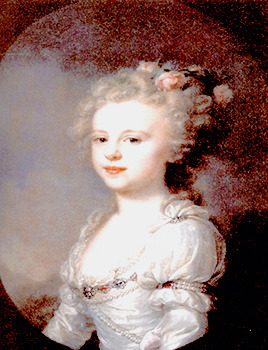

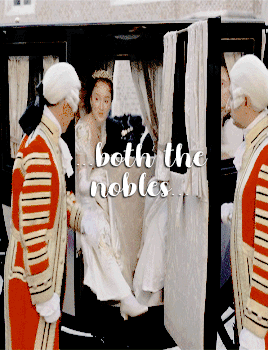
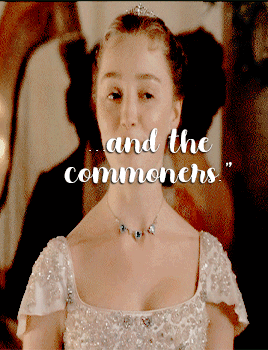
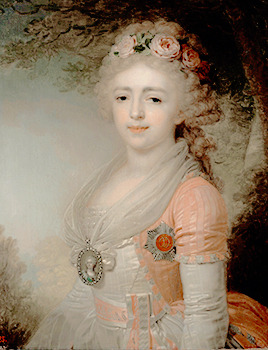
"In 1799, three years after her failed betrothal with the King of Sweden, another marital project originated for Alexandra. Previously in 1798, Dukes Ferdinand Augustus and Alexander Frederick of Württemberg who were the brothers of the Empress Maria Feodorovna, arrived in St. Petersburg to serve in the Russian army. They expressed the interest of Austria to join with Russia in a coalition against the rising power of the French Republic and Napoleon, and to cement this alliance, it was decided to arrange a marriage between Alexandra and Archduke Joseph of Austria, Palatine (Governor) of Hungary and a younger brother of Francis II, Holy Roman Emperor. Archduke Joseph personally came to Russia to see his bride. The meeting between them was successful. In mid-February 1799 the betrothal ball was held. Later, a marriage contract was signed in which Alexandra would be allowed to kept her Russian Orthodox faith. In October, Count Fyodor Rostopchin wrote:
"Believe me, that's not good started to strengthen the alliance with the Austrian court by ties of blood... Of all the sisters she will be given the least successful marriage. She will have nothing to wait for, and her children even more so."
On 25 September 1799, a decree was published about the royal title of Alexandra. In Russia, she was referred to as "Her Imperial Highness Grand Duchess the Archduchess of Austria" with the French prefix of "Palatine d'Hongrie". The wedding took place on 30 October 1799 at Gatchina Palace, one week after the wedding of her sister Elena. To celebrate both events, poet Gavrila Derzhavin wrote the ode "the wedding celebrations of 1799". On 21 November the couple went to Austria. Countess Varvara Golovina remembered that Alexandra was sad to leave Russia, and her father Emperor Paul I "constantly repeated, would not see her since her sacrifice." According to Alexandra's confessor, Andrei Samborski, Alexandra was given a cold reception in Vienna. However, other sources offer a different view. Queen Maria Carolina of Naples (the Emperor's mother-in-law) and her daughters arrived in Vienna in August 1800 for a long stay. Maria Carolina's daughter, Princess Maria Amalia of Naples, wrote in her journal that on 15 August the Queen and her daughters were introduced to Alexandra, whom she described as "very beautiful". Maria Amalia and Alexandra became friends during this time; and the Princess of Naples wrote in her journal that the Russian Grand Duchess and her husband had a friendly relationship with the rest of the imperial family and took part in the family gatherings, parties and balls in Vienna, which contrasts with the version given by Andrei Samborski. For instance, in January 1801, Maria Amalia wrote in her journal that the imperial family used to attend balls in Archduke Joseph's residence in Vienna, where "beautiful Alexandra, always serious and sad, has a magnificent household." When she was presented to Emperor Francis II, she reminded him of his first wife Elisabeth of Württemberg, who was her maternal aunt; this caused the jealousy of Empress Maria Theresa, Francis II's second wife, who also was envious of Alexandra's beauty and fine jewelry. Imperial confessor Andrew Samborski wrote:
"Remembering the happy cohabitation with her led him (the Emperor) in extreme confusion of mind which afflicted the heart of the Empress, his present wife. After this, she became in the innocent victim of the Empress' implacable vengeance...The Empress not forgotten and humiliated her parents and siblings when she called them a family of freaks, due to the treatment that Grand Duke Constantine gave to his wife."
Once, Alexandra turned up to a ball beautifully dressed, with magnificent jewellery. The Empress was incensed at being upstaged by the Archduchess, and ordered her to remove her jewellery, and also told her that she could no longer wear them. Heeding her instructions, Alexandra only decorated her hair with flowers when she attended a play some time later. The flowers highlighted her beauty, leading her to be applauded and being given a standing ovation, making Maria Theresa even more furious. Archduke Joseph could not protect his wife from these attacks. Furthermore, her Eastern Orthodox faith aroused the hostility of the Roman Catholic Austrian court, who urged her to convert. Pavlovna was popular among Hungarians, both the nobles and the commoners. According to the legend, it was her suggestion to add the color green as the third color to the flag of Hungary. Hungarians had been using red and silver, then red and green as their national colors for centuries at the time. However, in the late 18th century, a third color was proposed to be added to the flag, to follow the style of the French tricolor. Pavlovna suggested green as a symbol for hope. By the mid-19th century, the red-white-green Hungarian tricolor became widespread.
Wikipedia of Grand Duchess Alexandra Pavlovna.
81 notes
·
View notes
Text
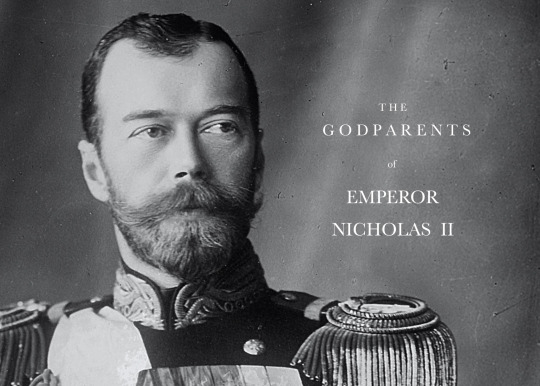


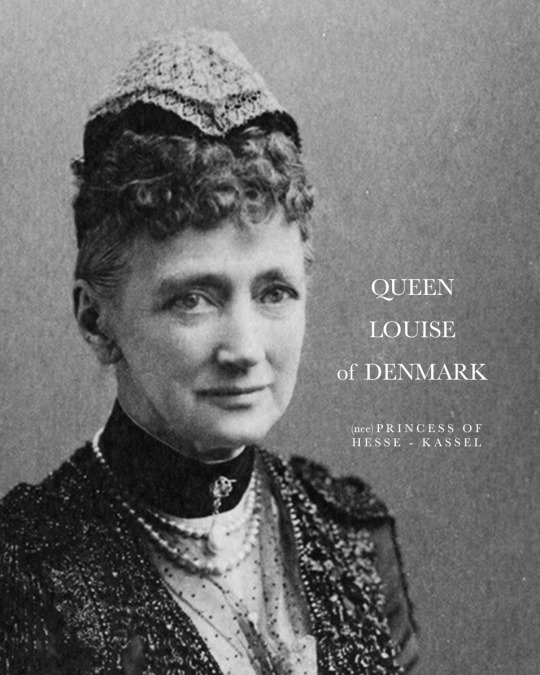

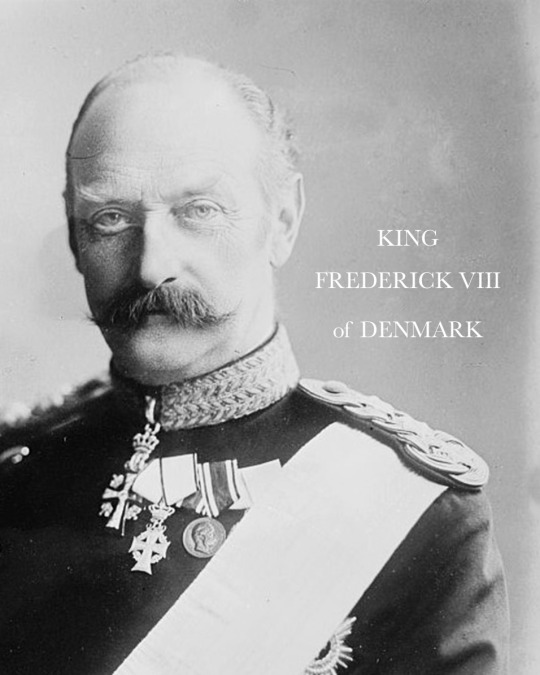
GODPARENTS OF NICHOLAS II
Born during his grandfather's reign on 18 May (New Style) 1868 at the Alexander Palace, Tsarkoe Selo in Saint Petersburg. He was the eldest son of Alexander III and his wife Maria Feodorovna (then, the Tsarevich and Tsarina of Russia). He was christened on 1 June at the Chapel of the Resurrection of the Catherine Palace at Tsarskoe Selo, by the confessor of the imperial family, protopresbyter Vasily Borisovich Bazhanov. His godparents were:
ALEXANDER II, EMPEROR OF RUSSIA - his paternal grandfather, the Russian Emperor stood as one of the godparents. He became the Emperor of All Russia in 1855. Alexander’s most significant reform as emperor was the emancipation of Russia’s serfs in 1861, for which he is known as Alexander the Liberator. He was assassinated in 1881 when the young Nicholas was only 12 years-old, to which he became the heir apparent upon his death.
PRINCESS MARIE OF HESSE AND BY RHINE, EMPRESS MARIA ALEXANDROVNA OF RUSSIA - his paternal grandmother, the consort of Emperor Alexander II, was another of his godparents. Known for her intellect, she was one of the founders of the Russian Red Cross Society. However, she suffered from tuberculosis from 1863 and spent long stays in southern Europe to avoid harsh winters. Although she and her husband were unofficially separated sometime after the death of their eldest son, Maria was treated with respect and love by her surviving family. Maria passed away from illness when the young Nicholas was still a child.
PRINCESS LOUISE OF HESSE-KASSEL, QUEEN CONSORT OF DENMARK - his maternal grandmother was listed as one of his godparents. Louise became the Queen consort of Denmark upon her husband's - King Christian IX - accession in 1863, just few years before her grandson Nicholas' birth. She, herself, was a niece of another King of Denmark (Christian VIII). The great dynastic success of Louise's six children was to a great extent a result of Louise's own ambitions - through them, she was a grandmother of not only the future Tsar of Russia (Nicholas II), but also that of King George V of the United Kingdom; King Constantine I of Greece; King Christian X of Denmark, and King Harken VII of Norway.
GRAND DUCHESS ELENA PAVLOVNA OF RUSSIA - his great-great-aunt, the wife of the late Grand Duke Michael Pavlovich, was one of his godparents. Born as Princess Charlotte of Württemberg, she became a close friend of his grandmother the Empress Maria Alexandrovna, and was known as an intellectual. She was also considered the most exceptional woman in the imperial family since Catherine the Great.
KING FREDERICK VIII OF DENMARK - then, the Crown Prince, his maternal uncle stood as one of his godparents. During the long reign of his father, he was largely excluded from influence and political power. Upon his father's death in 1906, he acceded to the throne at the advanced age of 62. In many ways, Frederick VIII was a liberal monarch who was much more favorable to the new parliamentary system introduced in 1901 than his father had been, being reform-minded and democratically inclined.
Source
84 notes
·
View notes
Text
Royal Tiara Challenge 2024 : Favourite emerald tiara. 👑
The Greek emerald parure.
The emeralds came to Greece with Queen Olga, who was born Grand Duchess Olga Constantinovna of Russia. She was the daughter of Grand Duke Constantine Nikolaevich, the second son of Tsar Nicholas I and the younger brother of Tsar Alexander II. Olga was only twelve when she met her future husband, King George I of the Hellenes, for the first time, and she had just turned sixteen when they married.






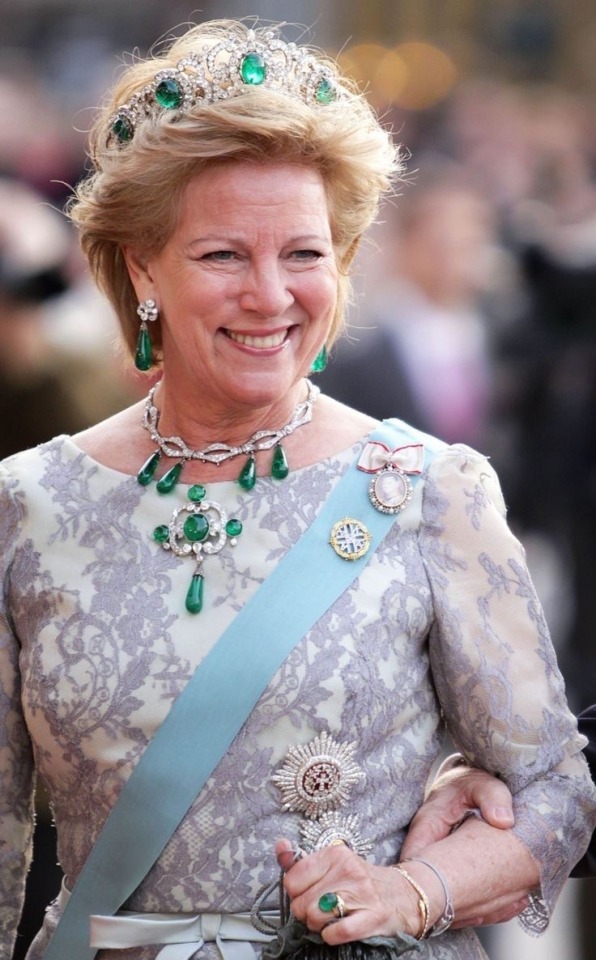
9 notes
·
View notes
Text



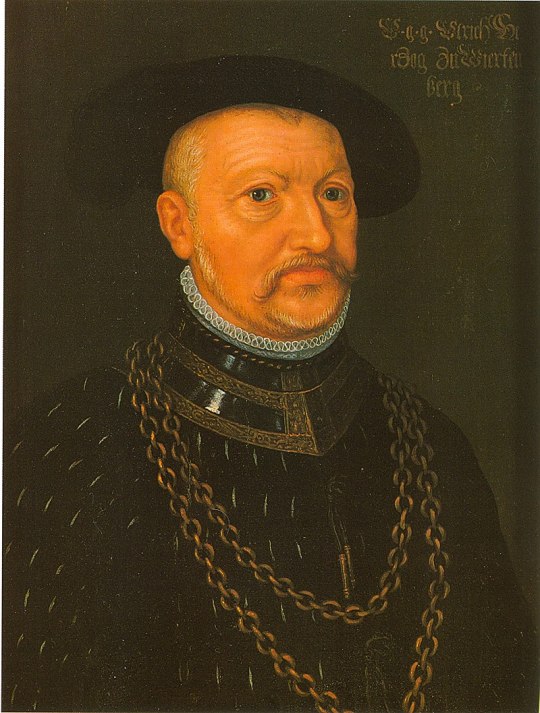


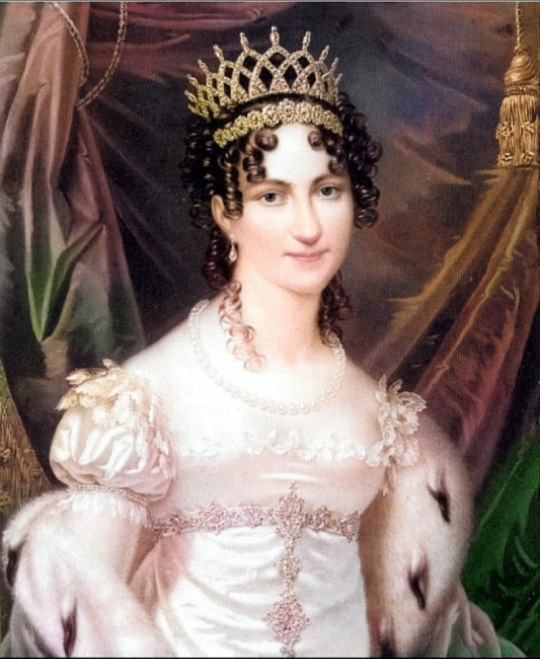

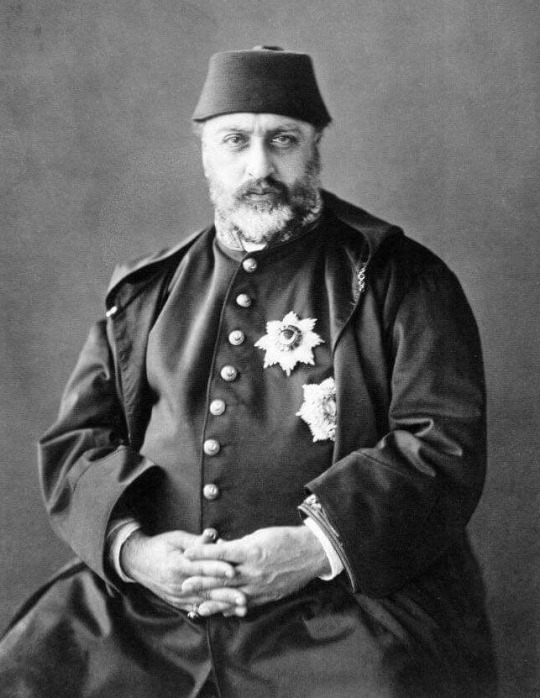
Royal Birthdays for today, February 8th:
Yaroslav II, Grand Prince of Vladimir, 1191
Afonso IV, King of Portugal, 1291
Constantine XI Palaiologos, Byzantine Emperor, 1405
Ulrich, Duke of Württemberg, 1487
Sakuramachi, Emperor of Japan, 1720
Gia Long, Emperor of Vietnam, 1762
Caroline Augusta of Bavaria, Empress of Austria, 1792
Michael Pavlovich, Grand Duke of Russia, 1798
Abdülaziz, Ottoman Sultan, 1830
#Caroline Augusta of Bavaria#yaroslav ii#afonso iv#Constantine XI Palaiologos#duke ulrich#emperor Sakuramachi#emperor gia long#michael pavlovich#Abdülaziz#royal birthdays#long live the queue
7 notes
·
View notes
Photo
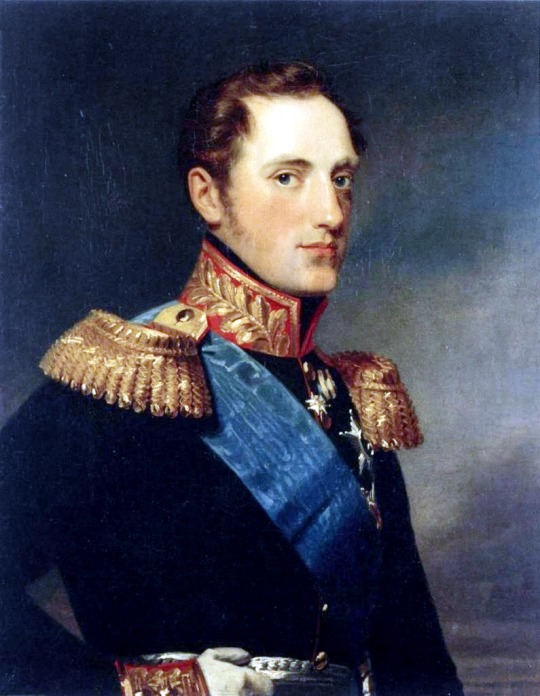
TSAR NICHOLAS I OF RUSSIA.
Nicholas Pavlovich Romanov known as Tsar Nicholas I (6 July 1796 – 2 March 1855) reigned as Emperor of Russia from 1825 until 1855. He was also the King of Poland and Grand Duke of Finland.
Nicholas was born at Gatchina Palace in Gatchina to Grand Duke Paul, and Grand Duchess Maria Feodorovna of Russia. Five months after his birth, his grandmother, Catherine the Great, died and his parents became emperor and empress of Russia. He was a younger brother of Emperor Alexander I of Russia, who succeeded to the throne in 1801, and of Grand Duke Constantine Pavlovich of Russia. On 13 July 1817, Nicholas married Princess Charlotte of Prussia (1798–1860), who thereafter went by the name Alexandra Feodorovna when she converted to Orthodoxy. Nicholas had a happy marriage that produced a large family; all of their seven children survived childhood.
On 1825 Nicholas brother's Tsar Alexander died with no heirs and the Russian throne passed to his brother Constantine who renouced. After Constantine's renouce Nicholas became Tsar of all Russias on 1825. Nicholas' biographer Nicholas V. Riasanovsky said that he displayed determination, singleness of purpose, and an iron will, along with a powerful sense of duty and a dedication to very hard work. He saw himself as a soldier—a junior officer totally consumed by spit and polish. He was highly nervous and aggressive. Trained as an engineer, he was a stickler for minute detail. In his public persona, stated Riasanovsky, "Nicholas I came to represent autocracy personified: infinitely majestic, determined and powerful, hard as stone, and relentless as fate."
Nicholas was known as a gorgeous man, Riasanovsky says he was, "the most handsome man in Europe, but also a charmer who enjoyed feminine company and was often at his best with the men."
Nicholas died on 2 March 1855, during the Crimean War, at the Winter Palace in St. Petersburg. He caught a chill, refused medical treatment and died of pneumonia, although there were rumors he was committing a passive suicide by refusing treatment. He was buried in the Peter and Paul Cathedral in St. Petersburg.
13 notes
·
View notes
Text
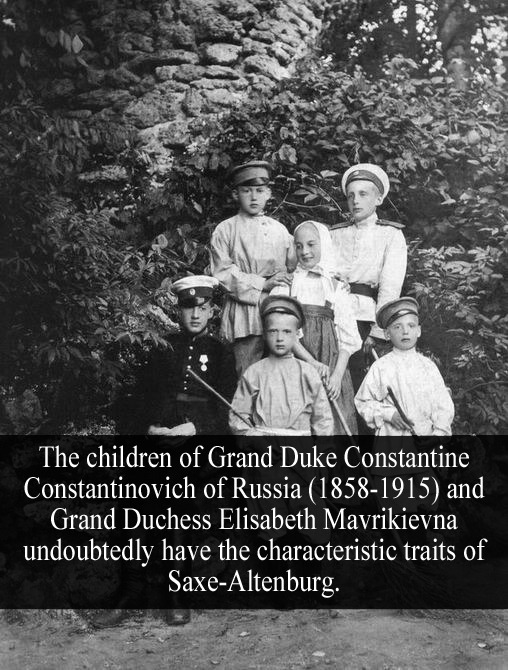
“the children of Grand Duke Constantine Constantinovich of Russia (1858-1915) and Grand Duchess Elisabeth Mavrikievna undoubtedly have the characteristic traits of Saxe-Altenburg” - Submitted by sublimebakerypiewagon-blog
14 notes
·
View notes
Text
Some more AI Generated Images of Historical Royals in Retro Outfits:


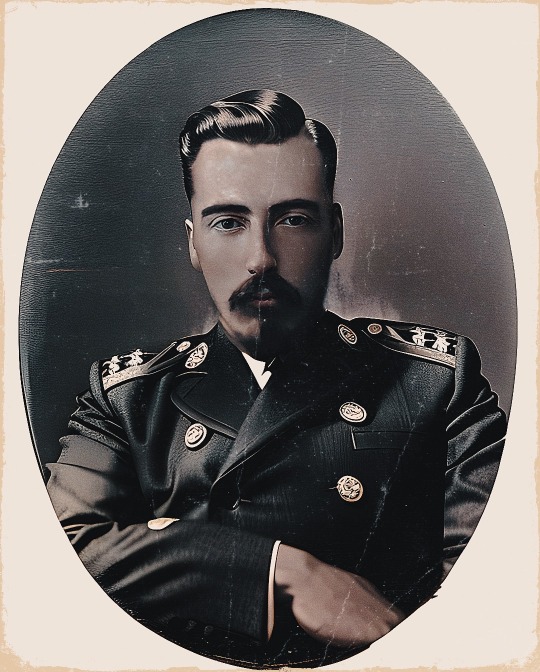



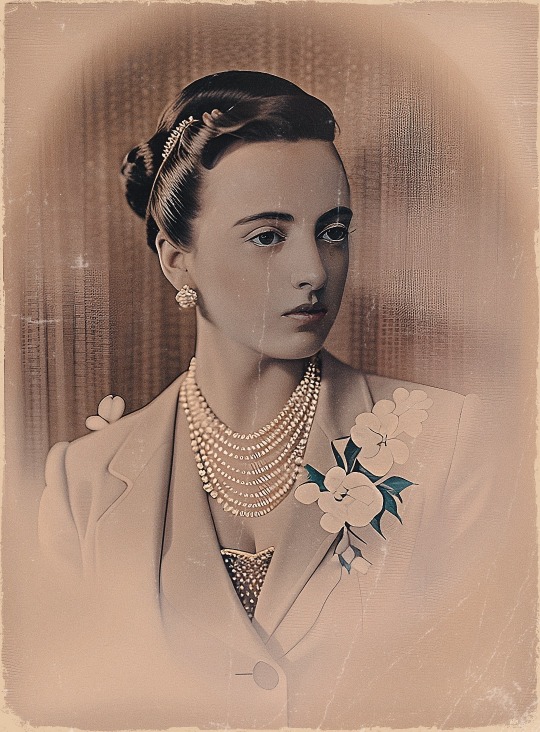
1. Crown Prince Constantine of Greece and his fiancée Princess Sophie of Prussia.
2. Countess Sophie de Torby.
3. Grand Duke Michael Mikhailovich of Russia.
4. Countess Nadejda de Torby.
5. Countess Anastasia de Torby.
6. Queen Maud of Norway.
7. Grand Duchess Anastasia Mikhailovna of Russia.
7 notes
·
View notes
Text
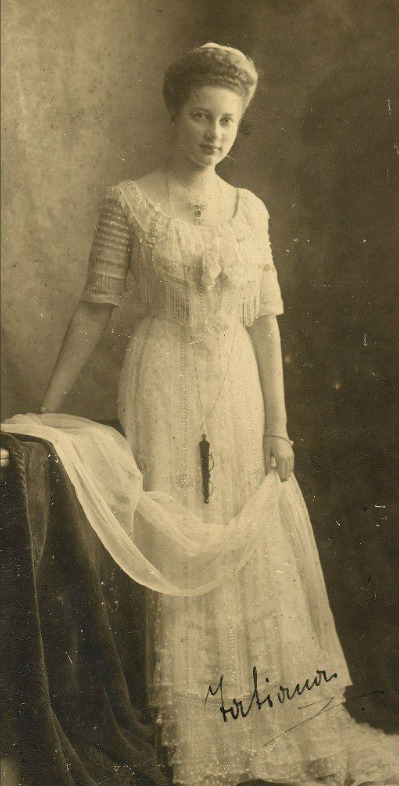
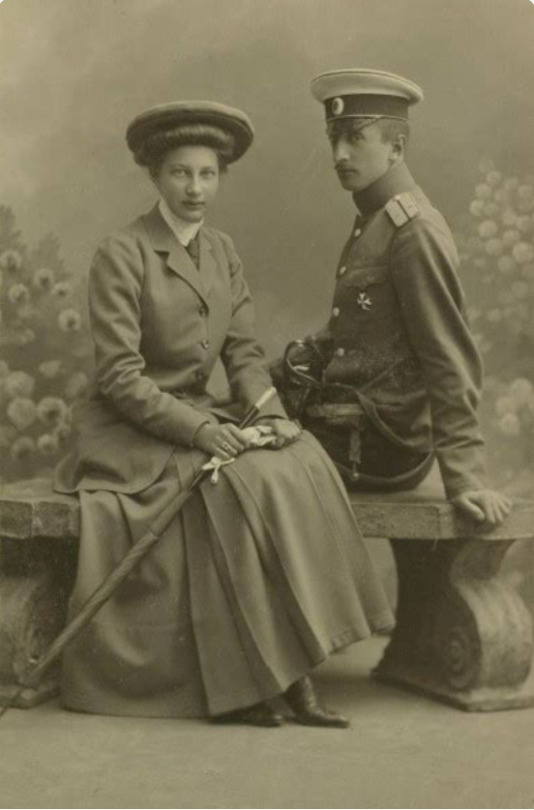
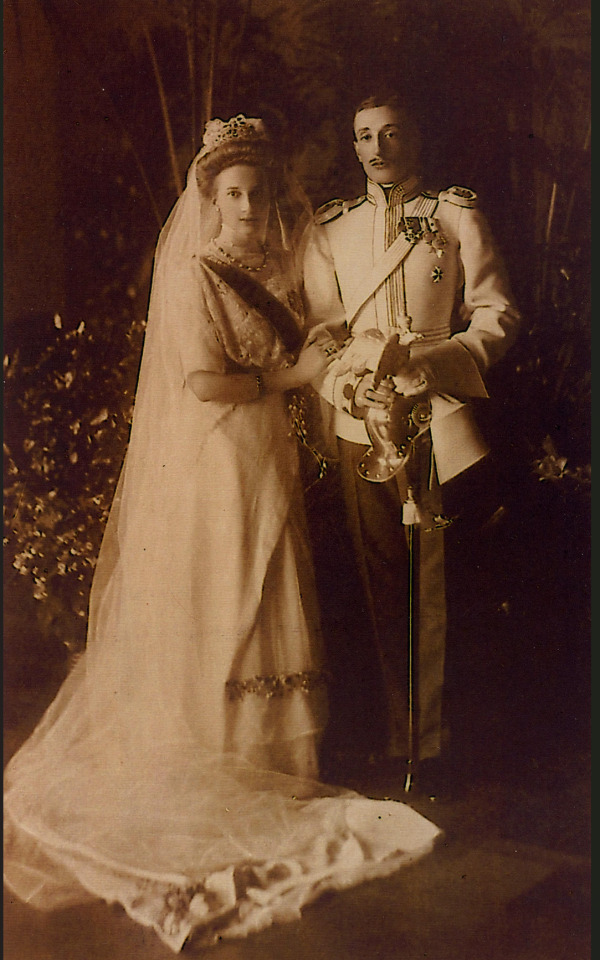
Above is a picture of beautiful Princess Tatiana Konstantinovna, followed by two photographs of her and her betrothed and later husband, the Georgian Prince Konstantine Bagration of Mukhrani
Below, is Tatiana in 1915, and Tatiana with her beautiful baby boy Teymuraz. On the group picture, she appears with her sister Vera and her adult son and daughter Teymuraz and Natalia.
The last picture depicts Tatiana as Mother Tamara, Abess of the Mount of Olives Convent in Jerusalem.
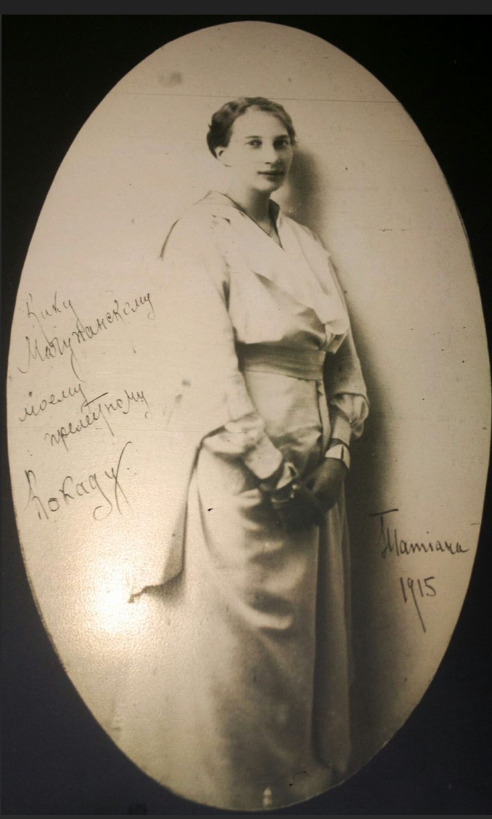



The Last Princesses of Imperial Russia
Princess Tatiana Konstantinovna: Third child, first daughter of Grand Duke Konstantin Konstantinovich and Grand Duchess Elizabeta Mavrikievna
When I look at pictures of Princess Tatiana Konstantinovna, I can imagine her at court functions with the Grand Duchesses Olga, Tatiana, Maria, and Anastasia...at balls, each other's weddings, and the baptism of each other's children. They were the next generation of the Imperial Family. But their fates took horrific detours. At least Princess Tatiana Konstantinovna survived.
Tatiana fell in love with and married Prince Konstantine Bagration of Mukhrani. Her father initially did not approve of the match but eventually consented. There are discussions about whether this marriage is morganatic or not, but we will not get into that here. The union went through with the Tzar's consent.
Tatiana and her bridegroom had two children: Teymuraz Bagration (1912 - 1992) and Natasha Bagration (1914-1984). Tatiana's wedded bliss did not last long...her husband died at war in 1914. She had already lost her brother Oleg at the beginning of the war. Her father died of natural causes shortly after the death of his son-in-law. Her uncle Grand Duke Dmitri Konstantinovich, would be executed by the Bolsheviks. Her brothers John, Constantine, and Igor would also be murdered.
After the death of Prince Bagration, Natalia fell in love with the aide de camp to her uncle Grand Duke Dmitri Konstantinovich. Her uncle encouraged her to leave Russia with him. She married Alexander Vassilievich Korochenzov in exile, but he died three months after the wedding. Although Tatiana reunited with her mother and two younger siblings (Vera and George), she basically raised her children alone.
In 1946, after her children were grown and married, she took the veil (this was a dream her father had for her.) She entered the Mount of Olives Convent in Jerusalem (after serving at another convent.) She died as Abess Mother Tamara (named so after the medieval Georgian queen Tamar, a remote ancestor of Tatiana's first husband) on 28 August 1979.
#Princess Tatiana Konstantinovna#Prince Konstantine Bagration of Mukhrani#Grand Duke Dmitry Konstantinovich#Grand Duke Konstantin Konstantinovich#Taymuraz Bagration#Natasha Bagration#Romanov Dynasty#Romanov family#Imperial Russia#Russian history#vintage photographs
12 notes
·
View notes
Note
could you recommend any books on maria pavlovna the elder, or at least books that mention and/or describe her life and personality? 🤍
hey 🤍 unfortunately the list will be short, off the top of my head:
- Grand Duchess Marie Pavlovna by Galina Korneva and Tatiana Cheboksarova. It is a very rare and expensive book which I never had the chance to read but if I’m not mistaken @imperial-russia has a copy so she might tell us if it is a good read or not!
- From Splendor to Revolution by Julia P. Gelardi.
- Romanov autumn by Charlotte Zeepvat.
- The Flight of the Romanovs by John Curtis Perry and Constantine Pleshakov.
- La France des Romanov by Cyrille Boulay (if you read french)
- Nicholas and Alexandra by Robert K. Massie.
- The Camera and the Tsars: A Romanov Family Album by Charlotte Zeepvat.
- The jewels of the Romanovs by Stefano Papi.
- The Grand Dukes, volume 1 by Arturo E. Beéche.
- A Lifelong Passion by Sergei Mironenko and Andrei Maylunas.
- The story of my life by Queen Mary of Romania.
#please feel free to add more books to the list :)#answer#what would i give to have a full 200+ pages biography about her!!!#i want to read her letters#(especially the ones to bismarck)#i want to read how ambitious#intelligent and ruthless she could be#i want a lenghthy account about the lavish parties she threw#with her eclectic list of guests#i want the court gossips#about the rivalry in the imperial family#sigh
12 notes
·
View notes
Photo
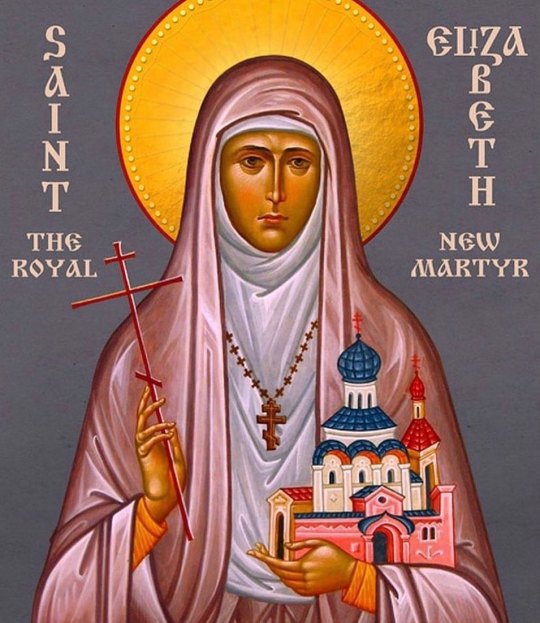
Today we celebrate the memory of the Holy Royal New Martyr, Elizabeth the Grand Duchess of Russia, the Nun Barbara and those with them. Saint Elizabeth was the grand daughter of Queen Victoria. She was also the older sister of Tsarina Alexandra (Alice) of Russia. Marrying the Grand Duke Sergius of Russia, the then Elizabeth converted to Orthodoxy, not because of her marriage, but rather of her profound interest in the faith. When her husband was assassinated in 1905, Saint Elizabeth went to the prison of her husband's murderer and preached repentance to him. Such was the gentleness and humility of her soul. She sold her mansion and bought a small property to live in. Here the Saint looked after the poor and infirm with all her heart. She then founded the Martha and Mary convent where many nuns came to live with her. The Communist rule forced Saint Elizabeth to leave her monastery with one of her her nuns, Barbara, with whom she went to Ekaterinburg. At the end of May 1918, Saint Elizabeth was taken house arrest and moved to nearby Alopaevsk with the Grand Dukes Sergius, John, and Constantine, and the young Count Vladimir Paley. They were all housed in a schoolhouse on the edge of town. St Elizabeth was under guard, but was permitted to go to church and work in the garden. On the night of July 5 1918, they were all taken to a place twelve miles from Alopaevsk, and executed. The Grand Duke Sergius was shot, but the others were thrown down a mineshaft, then grenades were tossed after them. St Elizabeth lived for several hours, and could be heard singing hymns. It is said that the last act of Elizabeth while alive in the mineshaft was tearing part of her nun's habit and wrapping her fellow martyr's wounds with the material. The bodies of Saints Elizabeth and Barbara (which were found incorrupt) were taken to Jerusalem in 1920, and buried in the church of St Mary Magdalene which the Grand Duchess herself revered greatly. May the new martyrs intercede for us always + #saint #saints #martyr #martyrs #newmartyr #newmartyrs #elizabeth #barbara #grandduchess #grandduchesselizabethfeodorovna #communist #grandduke #russia #moscow #nun #love #orthodox #saintoftheday (at Alapayevsk) https://www.instagram.com/p/CgIMP0svVgZ/?igshid=NGJjMDIxMWI=
#saint#saints#martyr#martyrs#newmartyr#newmartyrs#elizabeth#barbara#grandduchess#grandduchesselizabethfeodorovna#communist#grandduke#russia#moscow#nun#love#orthodox#saintoftheday
25 notes
·
View notes
Text
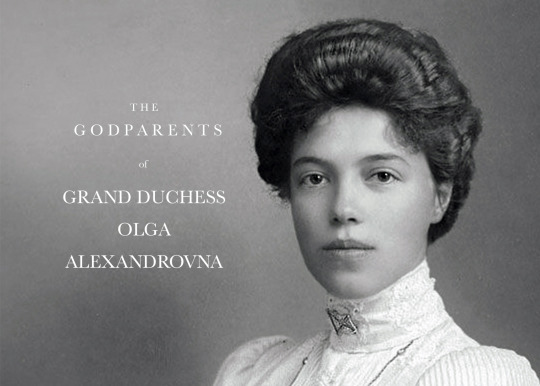

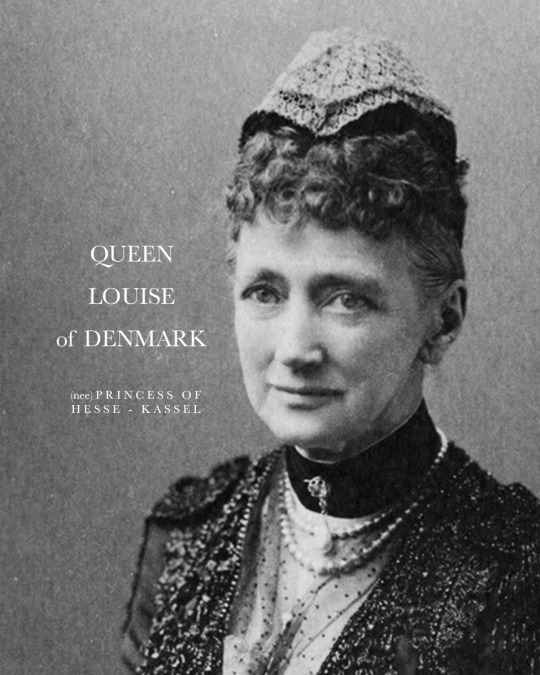



GODPARENTS OF GRAND DUCHESS OLGA ALEXANDROVNA
Grand Duchess Olga Alexandrovna, the youngest daughter of Emperor Alexander III of Russia, was born on 13 June 1882 at Peterhof Palace in Saint, Petersburg, Russia. She was christened on 23 July (Saint Olga's Day) in the Grand Palace Church, Peterhof by the Confessor of Their Imperial Majesties archpriest Bazhanov. Her godparents as listed:
KING CHRISTIAN IX OF DENMARK - her maternal grandfather, the Danish King was among her godparents. His initial unpopularity at the start of his reign, and the many years of political strife, where the king was in conflict with large parts of the population, his popularity recovered towards the end of his reign, and he eventually became a national icon due to the length of his reign. He was absent at the christening of his Russian grandchild.
PRINCESS LOUISE OF HESSE-KASSEL, QUEEN CONSORT OF DENMARK - his maternal grandmother was another of her godparents. Louise became the Queen consort of Denmark upon her husband’s - King Christian IX - accession in 1863. Through her six children, she was a grandmother of not only the future Tsar of Russia (Nicholas II, Olga's eldest brother), but also that of King George V of the United Kingdom; King Constantine I of Greece; King Christian X of Denmark, and King Harken VII of Norway. Like her husband, Louise was also absent at the christening.
GRAND DUCHESS OLGA NIKOLAEVNA OF RUSSIA, QUEEN CONSORT OF WÜRTTEMBERG - her great-aunt was one of her godparents. She was the younger sister of her late grandfather, Alexander II. Attractive, cultured and intelligent, she had been considered to be one of the most eligible princesses in Europe. In 1846, she married Crown Prince Karl of Württemberg. She was absent at the christening of her namesake.
GRAND DUCHESS OLGA KONSTANTINOVNA OF RUSSIA, QUEEN CONSORT OF GREECE - her aunt and namesake was named as one of her godparents. Olga Konstantinovna was the first cousin of her father Alexander III, being the eldest daughter of Grand Duke Konstantin Nikolaevich of Russia. At 16, she married King George I of Greece, the brother of her mother Maria Feodorovna. Queen Olga was a popular figure in Russia, and in Greece. She was present at the christening.
GRAND DUKE ALEXEI ALEXANDROVICH OF RUSSIA - her uncle was another listed godparent of the young grand duchess. A naval officer for most of his life, he had a significant contribution in the equipment of the Russian navy with new ships and in modernizing the naval ports. He was present at the christening of his niece.
Source
28 notes
·
View notes
Photo
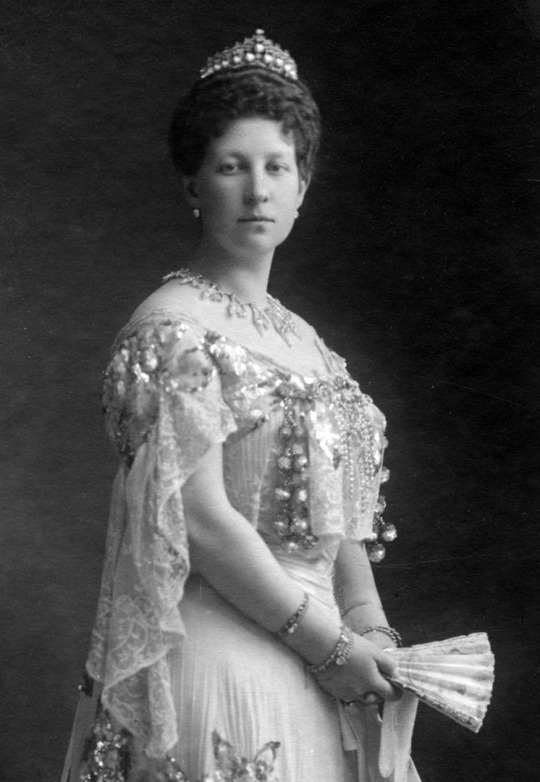
Princess Maria of Greece and Denmark (3 March 1876 – 14 December 1940) was a daughter of King George I of Greece and his wife Grand Duchess Olga Constantinovna of Russia. She was a sister of King Constantine I of Greece and a first cousin of Tsar Nicholas II of Russia.
Born as a princess of Greece and Denmark, she was educated in Athens by private tutors. Her father instilled in her a great love for Greece and throughout her life, she remained a fervent patriot. She married Grand Duke George Mikhailovich of Russia, her first cousin once removed, who courted her for five years. The wedding took place in 1900 in Corfu. The couple settled in St. Petersburg and they had two daughters: Princesses Nina (1901 -1974) and Xenia of Russia (1903 -1965).
Grand Duke George Mikhailovich had a house built for her in Crimea and he was a devoted father and husband, but the marriage was unhappy. Princess Maria, known upon her marriage as Grand Duchess Maria Georgievna of Russia, neither got to love her husband nor her adopted country. Longing for her native Greece, she never adapted to life in Russia. Over the years, she became estranged from her husband taking any opportunity to spend time abroad. At the outbreak of World War I, she was vacationing in England with her daughters and chose not to return to Russia. During the conflict, she was a patron of three military hospitals in Harrogate, which she financed generously.
Her husband was trapped in Russia after the revolution and he was shot by the Bolsheviks with several other Romanov relatives in January 1919. In her widowhood, deprived of her Russian income, Princess Maria faced serious financial difficulties. She returned to live in Greece with her daughters in 1920. There, she began a relationship with Admiral Perikles Ioannidis, who had been the commander of the ship that she took at her return to Athens. They were married in 1922. The proclamation of the Second Hellenic Republic in 1924, sent her into exile. The princess returned to live in Britain for a couple of years and she settled in Rome in 1926 with her second husband. She lived in Italy for over a decade until the outbreak of the Greco-Italian War in 1940 forced her to return to her native Greece. She was in poor health and was cared for by her nephew King Paul of Greece and his wife Frederica. She died, as the Greek royal family was about to leave for exile. She left a book of memoirs, published posthumously by her grandchildren with the title A Romanov Diary.
#Maria of Greece and Denmark#House Glücksburg#XIX century#XX century#people#portrait#photo#photography#Black and White
3 notes
·
View notes
Text
Attendees of King Constantine II’s Funeral
Immediate Family
Queen Anne- Marie
Crown Prince Pavlos
Crown Princess Marie-Chantal
Princess Maria-Olympia
Prince Constantine-Alexios
Prince Achilies-Andreas
Prince Odysseus-Kimon
Prince Arisites-Stavros
Princess Alexia
Carlos Morales Quintana
Arrietta Morales y de Grecia
Anna-Maria Morales y de Grecia
Carlos Morales y de Grecia
Amelia Morales y de Grecia
Prince Nikolas
Princess Tatiana
Prince Philippos
Princess Nina
Princess Theodora
Mr. Mathew Kumar
Princess Irene
Prince Michael
Marina, Consort of Prince Michael
Princess Alexandra Elli Francisca Maria of Greece, Mrs. Mirzayantz
Mr. Darius Mirzayantz
Foreign Royals
Spain
King Felipe VI
Queen Letizia
Queen Sofia
The Infanta Elena, The Duchess of Lugo
Infanta Cristina of Spain
Don Felipe de Marichalar y Borbón
Doña Victoria de Marichalar y Borbón
Don Juan Urdangarin y Borbón
Don Pablo Urdangarin y Borbón
Don Miguel Urdangarin y Borbón
Doña Irene Urdangarin y Borbón
Denmark
Queen Margrethe Ii
Crown Prince Fredrik
Prince Joachim
Germany
Princess Benedikte, Dowager Princess of Sayn- Wittgenstein- Berlerberg
Princess Alexandra of Sayn-Wittgenstein-Berleberg, The Countess Ahlefeldt-Laurvig-Bille
United Kingdom
The Princess Anne, The Princess Royal- Representing The King
Sir Vice admiral Timothy Laurence
The Lady Gabriella Kingston-represting The Prince of Wales
Mr. Thomas Kingston
Belgium
King Philippe
Queen Mathilde
Bulgaria
King Simeon II
Germany
Prince Berhand, The Margrave of Baden
Princess Stephanie, The Margravine of Baden
Prince Ernst-August, The Hereditary Prince of Hanover
Princess Ernest-August (Ekaterina), The Hereditary Princess of Hanover
Prince Christian of Hanover
Princess Christian (Sofia) of Hanover
Chantal, Princess of Hanover
Iran
Empress Farrah
Jordan
Queen Noor-representing her stepson
Princess Rayiah bint al-Hussien
Luxembourg
Grand Duke Henri
Grand Duchess Maria Teresa
Monaco
Prince Albert II
The Netherlands
King Willeim-Alexander
Queen Maxima
Princess Beatrix
Norway
Crown Prince Haakon-representing his father, The King of Norway
Crown Princess Mette-Marit
Princess Märtha Louise
Romania
Prince Radu-representing The Custodian of the Royal Crown of Romania
Sweden
King Carl XVI Gustaf
Queen Silvia
Princess Christina, Mrs. Magnusson
Russia
Grand Duchess Maria Vladimirovna of Russia
Yugoslavia
Crown Prince Alexander
Crown Princess Katherine
Other Notable People
Pia Getty-sister of his daughter-in-law. Marie Chantal
Marie Blanche Bierlein-mother of his daughter-in-law, Tatiana
Thomas Flohr-father of his daughter-in-law, Nina
4 notes
·
View notes
Text
Frigate "Pallada" by Alexey Bogolubov

Pallada (Russian: Паллада) was a sail frigate of the Imperial Russian Navy, most noted for its service as flagship of Vice Admiral Yevfimy Putyatin during his visit to Japan in 1853, which later resulted in the signing of the Treaty of Shimoda of 1855, establishing formal relations between the two countries. In addition to her diplomatic mission, her crew also conducted numerous geographical and natural studies in the Far East. She was scuttled by her own crew in the Crimean War due to the poor condition of her hull in 1855.
Pallada was built at the Admiralty Shipyard in St Petersburg, with her hull design based on the British frigate HMS President (1829), which in turn was based after an American frigate, President which had been captured as a prize of war by the Royal Navy during the War of 1812. The ship was intended from the start for use by members of the Russian imperial family on diplomatic missions, and Tsar Nicholas I issued an imperial rescript commanding that the vessel incorporate all of the latest innovations. After launching, she was based at Kronstadt with the Baltic Fleet and was assigned to the command of Captain Pavel Nakhimov, one of the ablest commanders in the Russian Navy. She entered active service in early August 1833.

Frigate Pallada by Constantin Cherepanov
Pallada was a three-masted frigate of wooden construction, with a transverse steel reinforcement skeleton in her hull. It was sheathed in copper sheets, to prevent destruction of the wood by marine organisms. A novelty on the Russian ships at the time was the use of portholes for lighting crew spaces on the lower deck.
In 1834, Pallada transported the future Frederick William IV of Prussia on a state visit to Russia. From 1835-1836 she served in various ports in the Baltic and in 1837 was tasked with carrying gold bullion to London on a special mission for the Russian embassy. She served until 1846 as a training ship for cadets. She underwent a complete overhaul from 1846–48, and afterwards was assigned to the Mediterranean, calling on Madeira and Lisbon in 1849 and was frequently the flagship for Grand Duke Konstantin Nikolayevich of Russia.
#art#sea#age of sail#history#world history#russian fleet#naval art#ships#sailing#japanese fleet#ship painting
3 notes
·
View notes
Text
what: historical tiaras
(All italicised text in this post is made up for the sake of this story)
THE ALEXANDRA FABERGÉ TIARA

Shown worn by Alexandra, Grand Duchess of Mecklenburg-Schwerin (nee Princess of Hannover and Cumberland). Alexandra is a granddaughter of Christian IX of Denmark and was a first cousin to Christian X of Denmark, Haakon VII of Norway (and his wife Maud of Wales), Nicholas II of Russia, George V of the United Kingdom and Constantine I of Greece. Alexandra married Friedrich Franz IV, Grand Duke of Mecklenburg-Schwerin in 1904. They had five children. Alexandra is the great-grandmother of the current monarch, Karolina Augusta I.

Named for its first owner, the Alexandra Fabergé Tiara was created by Fabergé in 1904 as a wedding present from her new husband, Friedrich Franz. It is made of diamonds and aquamarines, with forget-me-nots, bows and Cupid arrows worked into the design.

The tiara was inherited by her eldest surviving daughter, Thyra, upon Alexandra’s death in 1963. The tiara then passed to Thyra’s eldest son, Wilhelm Franz I, it was inherited by his daughter upon his death in 1992.
The tiara is generally reserved for use by the monarch or the monarch’s spouse. Since 2006, Karolina Augusta has been the only person to wear the tiara. She wears it with regularly frequency (once or twice a year).
THE ALEXANDRA FRINGE TIARA

Shown above worn by Alexandra, Grand Duchess of Mecklenburg-Schwerin (nee Princess of Hannover and Cumberland).
Named for its first owner, The Alexandra Fringe Tiara was created for Alexandra in the popular fringe style that imitated Russian Kokoshniks. The tiara was gifted to Alexandra following her marriage to Friedrich Franz IV, Grand Duke of Mecklenburg-Schwerin in 1904.
Alexandra gave the tiara to her eldest surviving daughter, Thyra, in 1945.
The tiara is made of upright rows of diamonds. While the tiara is generally reserved for the monarch and the monarch’s spouse, it is the traditional bridal tiara of the descendants of Thyra, Queen of Mecklenburg. The tiara is regularly worn by the current monarch and her mother, but continues to be lent to members of the family for weddings.
THE ALEXANDRA SCROLL TIARA

Alexandra received this tiara in 1904 as a wedding gift from her parents The Crown Prince and Princess of Hannover. The tiara is made of diamond scroll patterns and creates a circlet (it goes all the way around in a circle).
The tiara is generally reserved for use by the monarch or the monarch’s spouse. Presently, the tiara is only worn by Eleonora, the mother of the current monarch. Karolina Augusta I has chosen not to wear the tiara as of yet.
THE AMALIE FLORAL TIARA
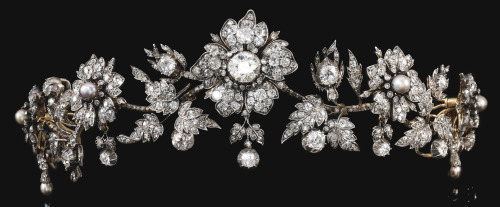
The Amalie Floral Tiara is made of diamonds and is named for its original owner, Duchess Amalie in Bavaria. The tiara was inherited by her second daughter, Karola of Urach. Karola had the tiara refashioned to be worn as a bandeau across the forehead. The tiara has not been refitted to be worn atop the head, but is instead normally nestled amongst the hair or still worn across the forehead. Duchess Amalie in Bavaria is the great-great-grandmother of the current monarch, Karolina Augusta I.
The Amalie Floral Tiara is generally reserved for the monarch or the monarch’s spouse. Presently, the tiara is worn by the current monarch and her mother, although its setting means the tiara is not worn often.
THE ELISABETH PEARL TIARA

Shown above worn by Elisabeth, Duchess of Mecklenburg-Schwerin (nee Princess of Stolberg-Rossla). The Elisabeth Pearl Tiara is named for its original owner. Elisabeth was the second wife of Duke Johann Albrecht of Mecklenburg-Schwerin, they were married in 1909. Elisabeth was the stepmother of Heinrich Ludwig I of Mecklenburg. After the death of her husband in 1920, Elisabeth married his younger half-brother, Adolf Friedrich. Elisabeth died in 1969.

The Elisabeth Pearl Tiara is made of diamonds and pearls. The tiara was inherited by Elisabeth’s step-grandson upon her death. This tiara is generally reserved for the monarch or the monarch’s spouse, and is currently worn by Karolina Augusta I and her mother, Eleonora.
THE ELISABETH SYBILLE GARRARD & CO TIARA

The Elisabeth Sybille Garrard & Co Tiara was purchased for Elisabeth Sybille, Duchess of Mecklenburg-Schwerin (nee Princess of Saxe-Weimar-Eisenach) from the British jewellery house by her husband, Duke Johann Albrecht of Mecklenburg-Schwerin during his tenure as regent for the Duchy of Brunswick. The tiara was created by Garrard & Co in the 1880s and is made of diamonds and upright and suspended pearls.
The Elisabeth Sybille Garrard & Co Tiara was inherited by her son, Heinrich Ludwig I, eventually being inherited by the current monarch, Karolina Augusta I. The tiara is typically reserved for the monarch or the monarch’s spouse, and is a popular choice for Karolina Augusta and her mother.
THE ELISABETH SYBILLE SUNBURST TIARA
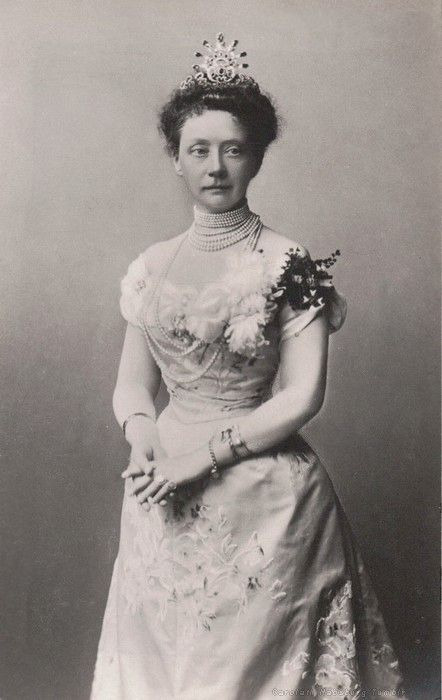
Shown above worn by Elisabeth Sybille, Duchess of Mecklenburg-Schwerin (nee Princess of Saxe-Weimar-Eisenach). The Elisabeth Sybille Sunburst Tiara is named for its original owner. Elisabeth Sybille is the granddaughter of William II of the Netherlands. She was a first cousin to Wilhelmina of the Netherlands and Friedrich III of the German Empire. Elisabeth Sybille was the first wife of Duke Johann Albrecht of Mecklenburg-Schwerin, they were married in 1886. Elisabeth Sybille died in 1908. They had one son, Heinrich Ludwig, who would later become the first King of Mecklenburg. Elisabeth Sybille is the great-great-grandmother of the current monarch, Karolina Augusta I.
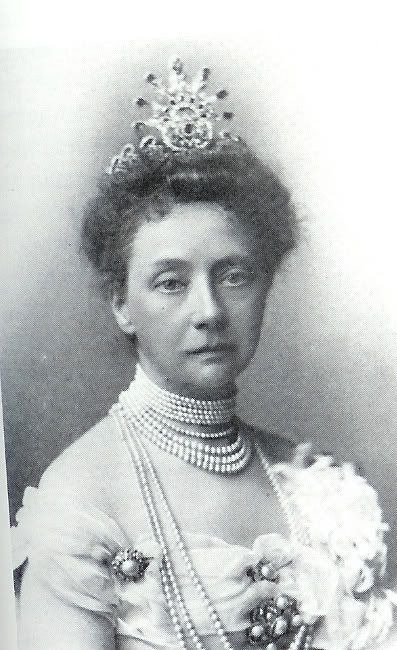
The tiara was made as a wedding gift from jewels provided by her mother, Princess Sophie of the Netherlands. The tiara is made of diamonds and rubies, though the rubies can be swapped out for diamonds and pearls (along the top sunburst section).
This tiara is also generally reserved for the monarch or the monarch’s spouse. The tiara is an unusual design that does not always work in a modern setting. However, the tiara is still worn by Karolina Augusta I and her mother every couple of years.
THE KAROLA GARLAND TIARA

Named for its first owner, the Karola Garland Tiara is composed of a foliate, floral and garland design made up of diamonds and emeralds. It was purchased for Princess Karola of Urach as a wedding present by her husband-to-be, Heinrich Ludwig I of Mecklenburg. Karola is the great-grandmother of the current monarch, Karolina Augusta I.
The Karola Garland Tiara is generally reserved for use by the monarch or the monarch’s spouse. Presently, it is worn by the current monarch and her mother.
THE KAROLA BELLE ÉPOQUE TIARA

Named for its first owner, the Karola Belle Époque Tiara is a garland styled diamond and pearl tiara by the Dutch jewellery designers, J.C. Burnier & Zoon. Heinrich Ludwig I bought the piece for his wife as an engagement gift in 1918.
The Karola Belle Époque Tiara is generally reserved for use by the monarch or the monarch’s spouse. Presently, it is worn by the current monarch and her mother.
THE KAROLA CARTIER STEEL TIARA

The Karola Cartier Steel Tiara is named for Queen Karola of Mecklenburg (nee Duchess of Urach) and was bought by her husband as a wedding present in 1918. The tiara was created by Cartier a few years earlier and is made of diamonds and blackened steel.
The Karola Cartier Steel Tiara was inherited by Queen Karola’s son, Paul Friedrich, upon her death in 1980. It is now owned by the current monarch, Karolina Augusta I, and this unusual, but striking, tiara is among the monarch’s favourite pieces. It has typically been worn by the monarch or the monarch’s spouse, but Eleonora has chosen not to wear it since the end of her daughter’s regency in 2006.
THE KAROLA CHEVRON TIARA

The Karola Chevron Tiara, named for its original owner, Queen Karola of Mecklenburg, and the diamond chevrons prominent in its design, was gifted to Karola by the noble houses of Mecklenburg following the birth of her son, Paul Friedrich in 1919.
The tiara is made of diamonds and is designed to be worn as a bandeau across the forehead. Its design does not allow it to be easily converted into a typical tiara and requires specific hairstyles to sit properly atop the wearer’s head.
The Karola Chevron Tiara was inherited by her son, Paul Friedrich, upon her death in 1980. It is currently owned by the current monarch, Karolina Augusta I. Typically worn by the monarch or the monarch’s spouse, The Karola Chevron Tiara is not frequently worn by Karolina Augusta I or her mother, but makes occasional appearances.
THE KAROLA ART DECO NECKLACE TIARA
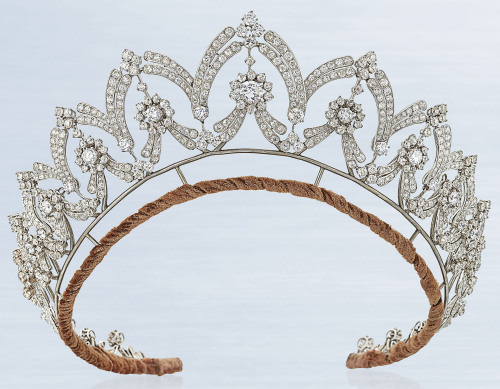
The Karola Art Deco Tiara was designed by Boucheron and purchased for Queen Karola of Mecklenburg in 1936 as a 40th birthday gift by her husband. The tiara can be converted into a necklace.
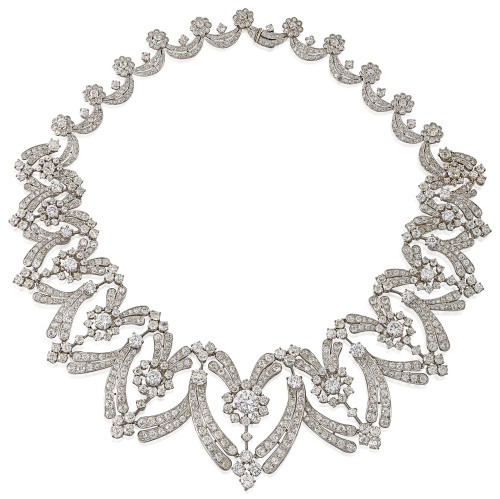
The Karola Art Deco Necklace Tiara is generally reserved for the monarch or the monarch’s spouse. Presently, it is worn by the current monarch more frequently as a necklace, but has been worn as a tiara with some regularity.
THE REUSS-KÖSTRITZ TIARA
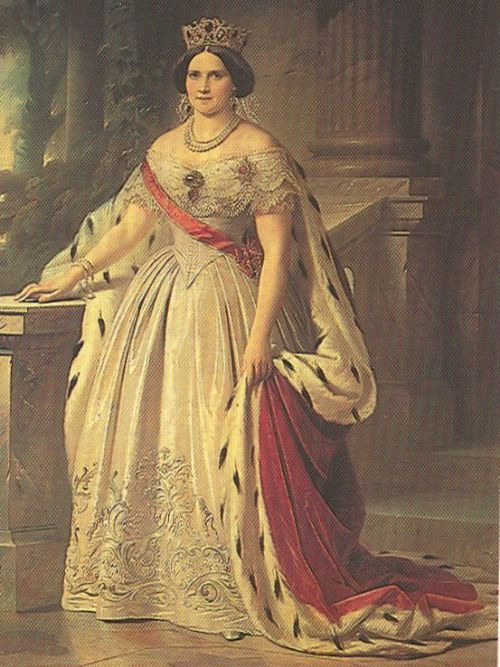
Shown above worn by Augusta, Grand Duchess of Mecklenburg-Schwerin (nee Princess Reuss of Köstritz). Augusta was the first wife of Friedrich Franz II, Grand Duke of Mecklenburg-Schwerin. They were married in 1849 and had six children. Augusta died aged 39 in 1862. Augusta is the great-great-great-grandmother of the current monarch, Karolina Augusta I, who bears her name in her honour.
The Reuss-Köstritz was created prior to 1856 and is one of the oldest tiaras in the family’s collection.

Shown above worn by Anastasia Mikhailovna, Grand Duchess of Mecklenburg-Schwerin (nee Grand Duchess of Russia). Anastasia Mikhailovna was the granddaughter of Nicholas I of Russia. She was the first cousin to Alexander III of Russia, Queen Victoria of Sweden and Queen Olga of Greece. She was the mother-in-law to Christian X of Denmark and to Wilhelm, Crown Prince of Germany. Anastasia Mikhailovna is the great-great-grandmother of the current monarch, Karolina Augusta I.
The Reuss-Köstritz Tiara is made of diamonds with three coloured stones. Originally emeralds, the stones can now be swapped out for rubies or amethysts. The tiara is generally reserved for the monarch or the monarch’s spouse. Presently, it is worn by the current monarch and her mother.
THE RUSSIAN PALMETTE TIARA

Shown above on the left worn by Anastasia Mikhailovna, Grand Duchess of Mecklenburg-Schwerin (nee Grand Duchess of Russia). The tiara has been opened up and placed in front of a kokoshnik.

Shown worn above again by Anastasia Mikhailovna, Grand Duchess of Mecklenburg-Schwerin (nee Grand Duchess of Russia). This time partially closed without the kokoshnik backing.
The tiara is made of seven palmettes and six spikes between each palmette. Palmettes get their name from their resemblance to palm tree leaves.
This tiara is also generally reserved for the monarch or the monarch’s spouse. Since 2006, the tiara has been solely worn by Karolina Augusta I. It is her favourite of the historical tiaras, being lighter and easier to wear for long periods of time.
THE THYRA CORAL TIARA

The Thyra Coral Tiara was created by Cartier and purchased by Crown Princess Thyra due to her love of, and large collection of, jewellery created with coral. The bright colour of the coral and the whimsy of the star diamonds made for a perfect tiara for the slightly eccentric Crown Princess.
The Thyra Coral Tiara is generally reserved for use by the monarch or monarch’s spouse. Presently, it is worn by the current monarch and her mother, though being a colourful piece means it is worn less than the other tiaras in the monarch’s collection.
THE THYRA DAVID WEBB NECKLACE TIARA
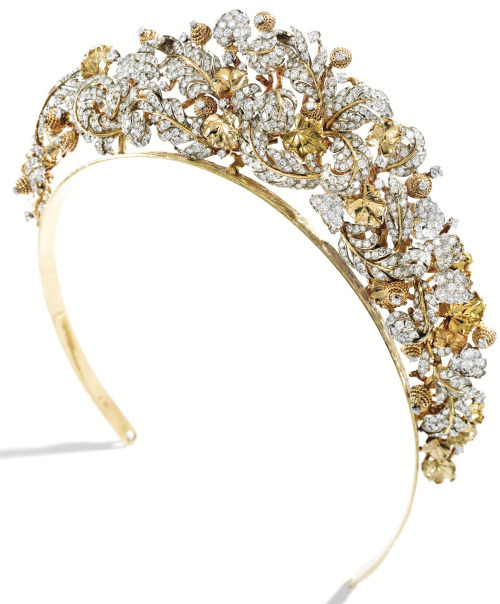
The Thyra David Webb Necklace Tiara was designed by American jewellery designer, David Webb, and purchased by Queen Thyra in 1973. David Webb was one of Thyra’s favourite designers and would purchase many of his pieces up until his death in 1975. The flowering vine with acorns is made of diamonds and gold, and can be converted into a bib-style necklace.

The Thyra David Webb Necklace Tiara is generally reserved for the monarch or the monarch’s spouse. Presently, the tiara is only worn by Eleonora, the mother of the current monarch. Karolina Augusta I has chosen not to wear the tiara as of yet.
THE THYRA IVY CIRCLET TIARA
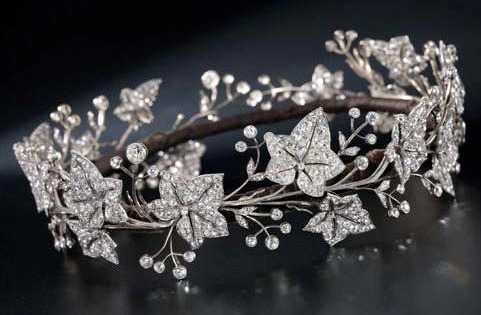
The Thyra Ivy Circlet Tiara was made by the British jewellery house, Garrard & Co around 1900 using ivy leaves from the 1860s. Then Crown Prince Paul Friedrich bought the tiara for his wife, Thyra, in 1946 as a belated wedding gift. The tiara was chosen especially because of the couple’s time spent in Britain during the Second World War. Under the Language of Flowers, ivy has a number of meanings, including friendship in adversity, constancy and lifelong love.
The Thyra Ivy Circlet Tiara is generally reserved for the monarch or the monarch’s spouse. Presently, the tiara is only worn by Eleonora, the mother of the current monarch. Karolina Augusta I has chosen not to wear the tiara as of yet.
Note: most of the other jewellery in the photos, the necklaces, earrings and brooches are also currently owned by the family and worn by various members of the family.
photos taken from pinterest. (Further pictures of the tiaras can be found in the Pinterest board), sotheby’s, or christie’s.
1 note
·
View note
Text
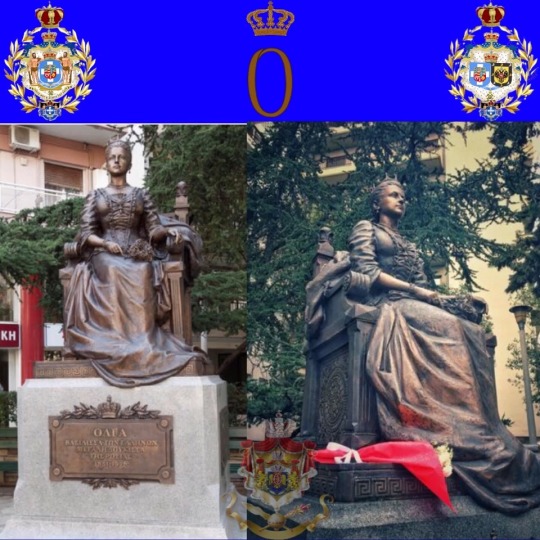





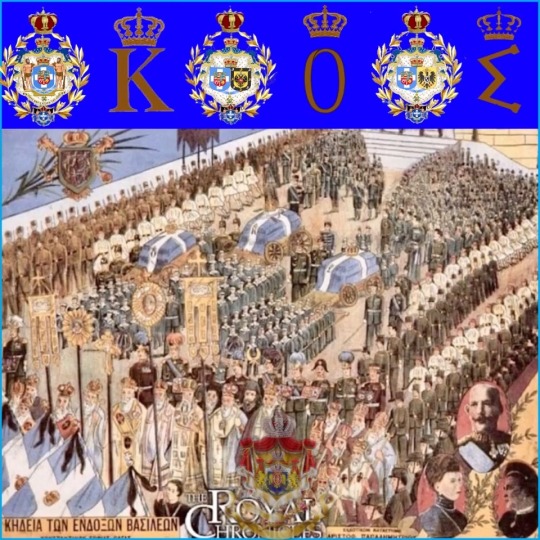


Today is 97 years since the death of HM Queen Olga Of Hellenes Princess of Denmark Grand Duchess of Russia (3 September 1851 – 18 June 1926)
She was Queen of Greece as the wife of King George I. She was briefly the regent of Greece in 1920.
A member of the Romanov dynasty, Olga was the eldest daughter of Grand Duke Constantine Nikolaievich and his wife, Princess Alexandra of Saxe-Altenburg. She spent her childhood in Saint Petersburg, Poland, and the Crimea, and married George at the age of sixteen at the chapel of the Winter Palace in Saint Petersburg on 27 October 1867. After five days of festivities, they spent a brief honeymoon at Ropsha, south-west of Saint Petersburg. Over the following twenty years, they had eight children:
* Constantine 2 -08–1868
* George 24-06-1869
* Alexandra 30-08-1870
* Nicholas (22-01-1872
* Marie 03-03-1876
* Olga 7-04-1880 – 2 November 1880
* Andrew 02-02-1882 and
* Christopher 10-04-1888
At first, she felt ill at ease in the Kingdom of Greece, but she quickly became involved in social and charitable work. She founded hospitals and schools, but her attempt to promote a new, more accessible, Greek translation of the Gospels sparked riots by religious conservatives.
On the assassination of her husband in 1913, Olga returned to Russia. When the First World War broke out, she set up a military hospital in Pavlovsk Palace, which belonged to her brother. She was trapped in the palace after the Russian Revolution of 1917, until the Danish embassy intervened, allowing her to escape to Switzerland. Olga could not return to Greece as her eldest son, King Constantine I of Greece, had been deposed.
In October 1920, Olga returned to Athens on the fatal illness of her grandson King Alexander of Greece. After his death, she was appointed regent (in November) until the restoration of Constantine I the following month. After the defeat of the Greeks in the Greco-Turkish War of 1919–22 the Greek royal family were again exiled and Olga spent the last years of her life in the United Kingdom, France and Italy.
Despite republicanism in Greece, Olga was still held in high esteem and the republican government in Athens offered to pay for her funeral and repatriate her remains to Greece. Nonetheless, her children declined the offer, preferring to bury her in Italy beside her son, Constantine I, whose body Greece had refused to accept.Her funeral was held on 22 June 1926 at the Orthodox Church in Rome and the next day she was laid to rest in the crypt of the Russian Church in Florence.
After the restoration of the Greek monarchy in 1935 she was re-interred at Tatoi on 17 November 1936.
As much of her property had been confiscated by the Soviet Union and the Greek republican government, most of her estate comprised jewelry reported in The Times to be worth £100,000 (equivalent to £5,600,000 in 2019). This was shared between her children and the children of Constantine I. Traumatized by the events of the Russian Revolution, Olga wished to sever all ties with the country in which her family had been massacred. Before dying, she made her grandson, King George II, swear to repatriate the body of her daughter Princess Alexandra, buried in the Peter and Paul Cathedral in Saint Petersburg. Her wish was fulfilled in 1940 after his restoration to the Greek throne.
Σήμερα συμπληρώνονται 97 χρόνια από τον θάνατο της Α.Μ. Βασίλισσας Όλγας των Ελλήνων Πριγκίπισσας της Δανίας Μεγάλης Δούκισσας της Ρωσίας (3 Σεπτεμβρίου 1851 – 18 Ιουνίου 1926)
Υπήρξε βασίλισσα της Ελλάδος ως σύζυγος του βασιλιά Γεωργίου Α΄. Υπήρξε για λίγο αντιβασιλέας της Ελλάδας το 1920.
Μέλος της δυναστείας των Ρομανόφ, η Όλγα ήταν η μεγαλύτερη κόρη του Μεγάλου Δούκα Κωνσταντίνου Νικολάγιεβιτς και της συζύγου του, πριγκίπισσας Αλεξάνδρας του Σάξ-Άλτενμπουργκ. Πέρασε τα παιδικά της χρόνια στην Αγία Πετρούπολη, την Πολωνία και την Κριμαία και παντρεύτηκε τον Γεώργιο σε ηλικία δεκαέξι ετών στο παρεκκλήσι των Χειμερινών Ανακτόρων στην Αγία Πετρούπολη στις 27 Οκτωβρίου 1867. Μετά από πέντε ημέρες εορτασμών, πέρασαν ένα σύντομο μήνα του μέλιτος στο Ropsha , νοτιοδυτικά της Αγίας Πετρούπολης. Τα επόμενα είκοσι χρόνια απέκτησαν οκτώ παιδιά:
* Κωνσταντίνου 2 -08–1868
* Γεώργιος 24-06-1869
* Αλεξάνδρα 30-08-1870
* Νικόλαος (22-01-1872
* Μαρία 03-03-1876
* Όλγα 7-04-1880 – 2 Νοεμβρίου 1880
* Ανδρέας 02-02-1882 και
* Christopher 10-04-1888
Στην αρχή ένιωθε άνετα στο Βασίλειο της Ελλάδος, αλλά γρήγορα ασχολήθηκε με κοινωνικό και φιλανθρωπικό έργο. Ίδρυσε νοσοκομεία και σχολεία, αλλά η προσπάθειά της να προωθήσει μια νέα, πιο προσιτή, ελληνική μετάφραση των Ευαγγελίων πυροδότησε ταραχές από θρησκευτικούς συντηρητικούς.
Μετά τη δολοφονία του συζύγου της το 1913, η Όλγα επέστρεψε στη Ρωσία. Όταν ξέσπασε ο Πρώτος Παγκόσμιος Πόλεμος, δημιούργησε ένα στρατιωτικό νοσοκομείο στο παλάτι Pavlovsk, το οποίο ανήκε στον αδελφό της. Εγκλωβίστηκε στο παλάτι μετά τη Ρωσική Επανάσταση του 1917, μέχρι που παρενέβη η πρεσβεία της Δανίας, επιτρέποντάς της να δραπετεύσει στην Ελβετία. Η Όλγα δεν μπορούσε να επιστρέψει στην Ελλάδα καθώς ο πρωτότοκος γιος της, ο βασιλιάς της Ελλάδας Κωνσταντίνος Α', είχε εκθρονιστεί.
Τον Οκτώβριο του 1920, η Όλγα επέστρεψε στην Αθήνα μετά τη θανάσιμη ασθένεια του εγγονού της, βασιλιά της Ελλάδας, Αλέξανδρο. Μετά τον θάνατό του, διορίστηκε αντιβασιλέας (τον Νοέμβριο) μέχρι την αποκατάσταση του Κωνσταντίνου Α' τον επόμενο μήνα. Μετά την ήττα των Ελλήνων στον ελληνοτουρκικό πόλεμο του 1919–22, η ελληνική βασιλική οικογένεια εξορίστηκε ξανά και η Όλγα πέρασε τα τελευταία χρόνια της ζωής της στο Ηνωμένο Βασίλειο, τη Γαλλία και την Ιταλία.
Παρά τον ρεπουμπλικανισμό στην Ελλάδα, η Όλγα εξακολουθούσε να έχει υψηλή εκτίμηση και η δημοκρατική κυβέρνηση στην Αθήνα προσφέρθηκε να πληρώσει για την κηδεία της και να επαναπατρίσει τα λείψανά της στην Ελλάδα. Παρόλα αυτά, τα παιδιά της αρνήθηκαν την προσφορά, προτιμώντας να την θάψουν στην Ιταλία δίπλα στον γιο της, Κωνσταντίνο Α', του οποίου το σώμα είχε αρνηθεί να δεχθεί η Ελλάδα. Η κηδεία της έγινε στις 22 Ιουνίου 1926 στην Ορθόδοξη Εκκλησία της Ρώμης και την επόμενη μέρα κηδεύτηκε να αναπαυθεί στην κρύπτη της Ρωσικής Εκκλησίας στη Φλωρεντία.
Μετά την αποκατάσταση της ελληνικής μοναρχίας το 1935 ενταφιάστηκε εκ νέου στο Τατόι στις 17 Νοεμβρίου 1936.
Καθώς μεγάλο μέρος της περιουσίας της είχε κατασχεθεί από τη Σοβιετική Ένωση και την ελληνική δημοκρατική κυβέρνηση, το μεγαλύτερο μέρος της περιουσίας της περιελάμβανε κοσμήματα που αναφέρθηκαν στους Times αξίας 100.000 λιρών (που ισοδυναμεί με 5.600.000 £ το 2019). Αυτό το μοιράστηκαν τα παιδιά της και τα παιδιά του Κωνσταντίνου Α΄. Τραυματισμένη από τα γεγονότα της Ρωσικής Επανάστασης, η Όλγα ήθελε να διακόψει κάθε σχέση με τη χώρα στην οποία είχε σφαγιαστεί η οικογένειά της. Πριν πεθάνει, έβαλε τον εγγονό της, βασιλιά Γεώργιο Β', να ορκιστεί να επαναπατρίσει το σώμα της κόρης της, πριγκίπισσας Αλεξάνδρας, που ήταν θαμμένη στον καθεδρικό ναό Πέτρου και Παύλου στην Αγία Πετρούπολη. Η επιθυμία της εκπληρώθηκε το 1940 μετά την αποκατάστασή του στον ελληνικό θρόνο.
#kingconstantine#danishroyalfamily#crownprincepavlos#queenannemarie#greek royal family#house of romanov#greekroyals#crownprincessmariechantal#danishroyals#princeconstantinealexios
0 notes